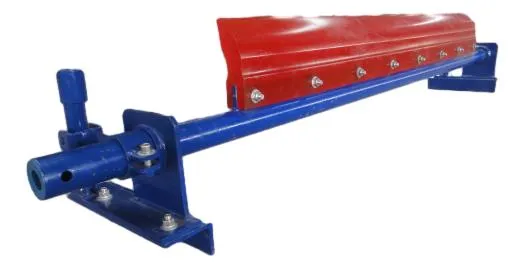 Afrikaans
Afrikaans  Albanian
Albanian  Amharic
Amharic  Arabic
Arabic  Armenian
Armenian  Azerbaijani
Azerbaijani  Basque
Basque  Belarusian
Belarusian  Bengali
Bengali  Bosnian
Bosnian  Bulgarian
Bulgarian  Catalan
Catalan  Cebuano
Cebuano  Corsican
Corsican  Croatian
Croatian  Czech
Czech  Danish
Danish  Dutch
Dutch  English
English  Esperanto
Esperanto  Estonian
Estonian  Finnish
Finnish  French
French  Frisian
Frisian  Galician
Galician  Georgian
Georgian  German
German  Greek
Greek  Gujarati
Gujarati  Haitian Creole
Haitian Creole  hausa
hausa  hawaiian
hawaiian  Hebrew
Hebrew  Hindi
Hindi  Miao
Miao  Hungarian
Hungarian  Icelandic
Icelandic  igbo
igbo  Indonesian
Indonesian  irish
irish  Italian
Italian  Japanese
Japanese  Javanese
Javanese  Kannada
Kannada  kazakh
kazakh  Khmer
Khmer  Rwandese
Rwandese  Korean
Korean  Kurdish
Kurdish  Kyrgyz
Kyrgyz  Lao
Lao  Latin
Latin  Latvian
Latvian  Lithuanian
Lithuanian  Luxembourgish
Luxembourgish  Macedonian
Macedonian  Malgashi
Malgashi  Malay
Malay  Malayalam
Malayalam  Maltese
Maltese  Maori
Maori  Marathi
Marathi  Mongolian
Mongolian  Myanmar
Myanmar  Nepali
Nepali  Norwegian
Norwegian  Norwegian
Norwegian  Occitan
Occitan  Pashto
Pashto  Persian
Persian  Polish
Polish  Portuguese
Portuguese  Punjabi
Punjabi  Romanian
Romanian  Russian
Russian  Samoan
Samoan  Scottish Gaelic
Scottish Gaelic  Serbian
Serbian  Sesotho
Sesotho  Shona
Shona  Sindhi
Sindhi  Sinhala
Sinhala  Slovak
Slovak  Slovenian
Slovenian  Somali
Somali  Spanish
Spanish  Sundanese
Sundanese  Swahili
Swahili  Swedish
Swedish  Tagalog
Tagalog  Tajik
Tajik  Tamil
Tamil  Tatar
Tatar  Telugu
Telugu  Thai
Thai  Turkish
Turkish  Turkmen
Turkmen  Ukrainian
Ukrainian  Urdu
Urdu  Uighur
Uighur  Uzbek
Uzbek  Vietnamese
Vietnamese  Welsh
Welsh  Bantu
Bantu  Yiddish
Yiddish  Yoruba
Yoruba  Zulu
Zulu conveyor roller bearing housing
Understanding Conveyor Roller Bearing Housings Key Components for Efficient Material Handling
In the world of material handling and logistics, conveyor systems play a pivotal role in ensuring the smooth and efficient movement of goods. One essential component that greatly influences the performance and longevity of these systems is the conveyor roller bearing housing. This article delves into what conveyor roller bearing housings are, their importance, types, and the factors that contribute to their efficiency and durability.
What is a Conveyor Roller Bearing Housing?
A conveyor roller bearing housing is a protective enclosure that houses the bearings and roller components of a conveyor system. These housings are designed to support the rollers, facilitate smooth rotation, and protect the internal components from dust, dirt, moisture, and other contaminants. The durability and performance of conveyors largely depend on the quality and design of the bearing housings.
Importance of Conveyor Roller Bearing Housings
1. Load Distribution Bearing housings help distribute the load evenly across the rollers, which is crucial in preventing premature wear and tear. An efficient load distribution minimizes stress on individual components, thereby extending the life of the entire conveyor system.
2. Protection As mentioned, these housings serve to guard the bearings from external elements that could cause damage. In industries where dust, dirt, or corrosive materials are commonplace, robust bearing housings are essential for maintaining operational efficiency.
3. Alignment Proper alignment of the bearings is vital for the smooth functioning of the conveyor system. Bearing housings are designed to ensure that the rollers are aligned effectively, thus reducing friction and preventing potential breakdowns.
4. Maintenance Conveyor roller bearing housings can also facilitate easier maintenance. Many designs incorporate features that allow for quick access to the bearings for lubrication or replacement, which can significantly reduce downtime during maintenance activities.
Types of Conveyor Roller Bearing Housings
1. Standard Bearing Housings These are the most common type, designed for general applications. They typically consist of a nut, washer, and various seals that protect the bearings.
conveyor roller bearing housing

2. Split Bearing Housings These housings are divided into two separate halves, making them easy to install and remove without having to dismantle the entire conveyor assembly. This design is particularly useful in applications where maintenance access is limited.
3. Flanged Bearing Housings Incorporating flanges allows these housings to be bolted directly to the conveyor frame. Their design provides enhanced stability and reduces the risk of misalignment.
4. Heavy-Duty Bearing Housings These are engineered for high-load applications and typically use thicker materials to withstand significant stress and impact. They are ideal for heavy-duty industrial environments.
Factors Contributing to Efficiency and Durability
Several factors influence the efficiency and durability of conveyor roller bearing housings
- Material Quality The material used in manufacturing the housings significantly impacts their lifespan. Common materials include cast iron, stainless steel, and thermoplastics, each offering unique resistance properties against wear, corrosion, and heat.
- Seal Design Effective sealing is critical for preventing contaminants from entering the housing. High-quality seals can dramatically extend the life of the bearings by keeping lubricants in and harmful particles out.
- Lubrication Regular lubrication of the bearings within the housing is essential for ensuring smooth operation. Automated lubrication systems can be integrated to maintain optimal performance with minimal manual intervention.
- Environmental Considerations Understanding the operational environment—such as temperature fluctuations, humidity, and exposure to chemicals—can help in selecting suitable bearing housings that will perform reliably and resist degradation.
Conclusion
Conveyor roller bearing housings are integral components that contribute significantly to the efficiency and longevity of conveyor systems. Understanding their function, types, and the factors influencing their performance can aid industries in optimizing their material handling operations. Investing in high-quality bearing housings ensures that conveyor systems run smoothly, thereby enhancing productivity and reducing operational costs over time. As industries continue to evolve, the role of conveyor roller bearing housings will remain critical in the quest for enhanced operational efficiency and reliability.
-
Revolutionizing Conveyor Reliability with Advanced Rubber Lagging PulleysNewsJul.22,2025
-
Powering Precision and Durability with Expert Manufacturers of Conveyor ComponentsNewsJul.22,2025
-
Optimizing Conveyor Systems with Advanced Conveyor AccessoriesNewsJul.22,2025
-
Maximize Conveyor Efficiency with Quality Conveyor Idler PulleysNewsJul.22,2025
-
Future-Proof Your Conveyor System with High-Performance Polyurethane RollerNewsJul.22,2025
-
Driving Efficiency Forward with Quality Idlers and RollersNewsJul.22,2025





























